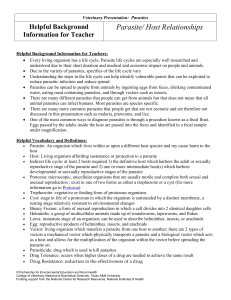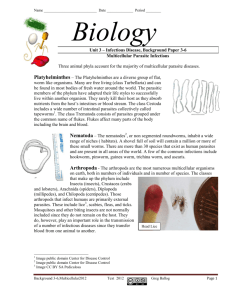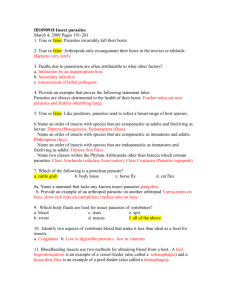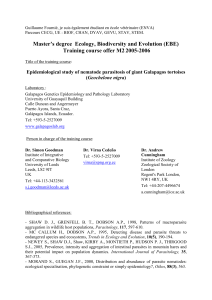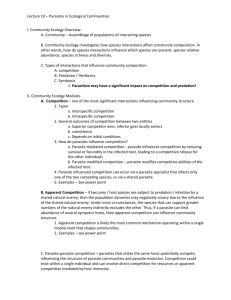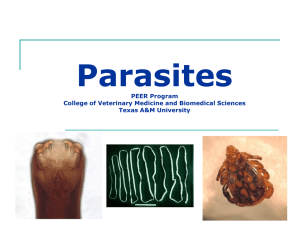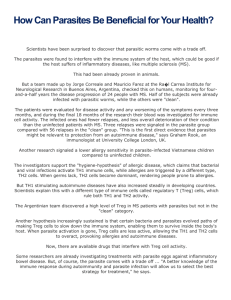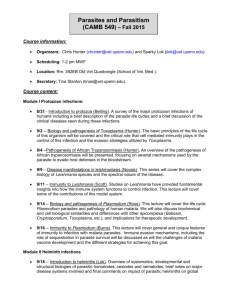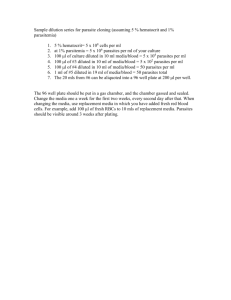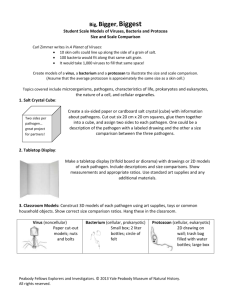Protozoan Parasites - Safe Drinking Water Foundation
advertisement
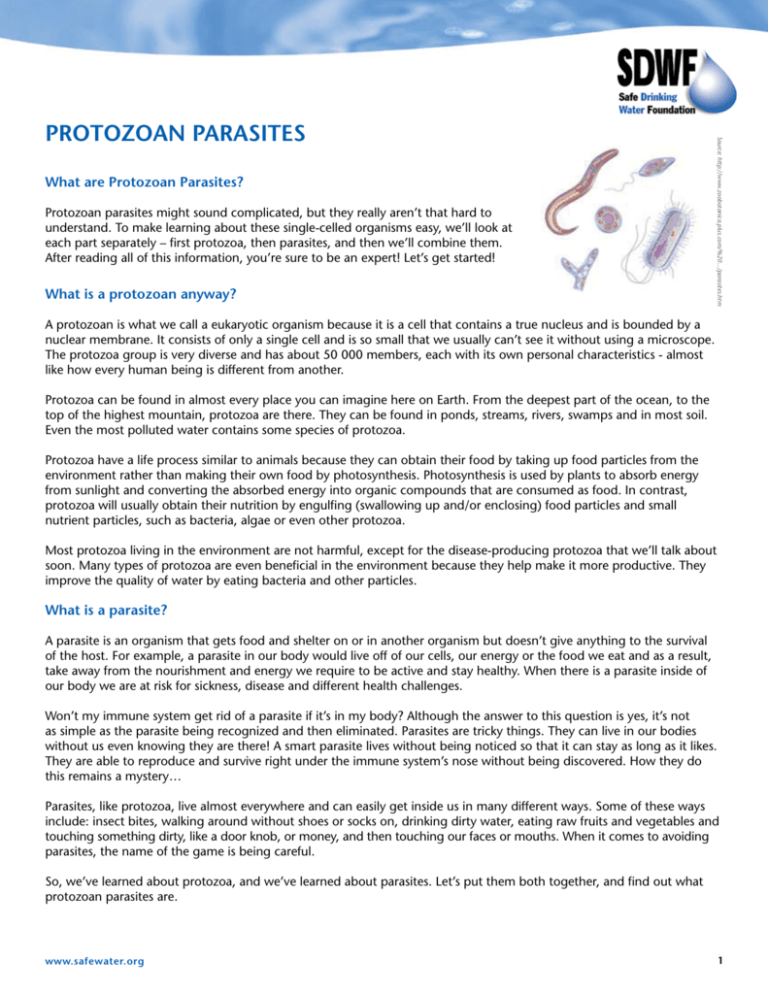
What are Protozoan Parasites? Protozoan parasites might sound complicated, but they really aren’t that hard to understand. To make learning about these single-celled organisms easy, we’ll look at each part separately – first protozoa, then parasites, and then we’ll combine them. After reading all of this information, you’re sure to be an expert! Let’s get started! What is a protozoan anyway? Source: http://www.zoobotanica.plus.com/%20.../parasites.htm Protozoan Parasites A protozoan is what we call a eukaryotic organism because it is a cell that contains a true nucleus and is bounded by a nuclear membrane. It consists of only a single cell and is so small that we usually can’t see it without using a microscope. The protozoa group is very diverse and has about 50 000 members, each with its own personal characteristics - almost like how every human being is different from another. Protozoa can be found in almost every place you can imagine here on Earth. From the deepest part of the ocean, to the top of the highest mountain, protozoa are there. They can be found in ponds, streams, rivers, swamps and in most soil. Even the most polluted water contains some species of protozoa. Protozoa have a life process similar to animals because they can obtain their food by taking up food particles from the environment rather than making their own food by photosynthesis. Photosynthesis is used by plants to absorb energy from sunlight and converting the absorbed energy into organic compounds that are consumed as food. In contrast, protozoa will usually obtain their nutrition by engulfing (swallowing up and/or enclosing) food particles and small nutrient particles, such as bacteria, algae or even other protozoa. Most protozoa living in the environment are not harmful, except for the disease-producing protozoa that we’ll talk about soon. Many types of protozoa are even beneficial in the environment because they help make it more productive. They improve the quality of water by eating bacteria and other particles. What is a parasite? A parasite is an organism that gets food and shelter on or in another organism but doesn’t give anything to the survival of the host. For example, a parasite in our body would live off of our cells, our energy or the food we eat and as a result, take away from the nourishment and energy we require to be active and stay healthy. When there is a parasite inside of our body we are at risk for sickness, disease and different health challenges. Won’t my immune system get rid of a parasite if it’s in my body? Although the answer to this question is yes, it’s not as simple as the parasite being recognized and then eliminated. Parasites are tricky things. They can live in our bodies without us even knowing they are there! A smart parasite lives without being noticed so that it can stay as long as it likes. They are able to reproduce and survive right under the immune system’s nose without being discovered. How they do this remains a mystery… Parasites, like protozoa, live almost everywhere and can easily get inside us in many different ways. Some of these ways include: insect bites, walking around without shoes or socks on, drinking dirty water, eating raw fruits and vegetables and touching something dirty, like a door knob, or money, and then touching our faces or mouths. When it comes to avoiding parasites, the name of the game is being careful. So, we’ve learned about protozoa, and we’ve learned about parasites. Let’s put them both together, and find out what protozoan parasites are. www.safewater.org What is a protozoan parasite? A protozoan parasite is basically a protozoan that has adapted to invade and live in cells and tissues of other organisms. We could say that a protozoan took lessons from a parasite to learn how they live and survive, and then slowly started changing to become more like them. A protozoan went from being able to survive on its own in the environment to mooching off others. Protozoan parasites cannot live in the open environment on their own like other protozoa, but must invade another organism’s body to obtain protection and nourishment. There are several protozoan parasites that cause problems. They are present in our food, soil and water and can make us very sick if they ever sneak inside us. Each different protozoan parasite can cause a different sickness or disease in our bodies. Some can cause serious diseases of the respiratory tract (air passages from the nose to lungs), and the central nervous system (brain, cranial nerves and spinal cord), while others live in our intestines and cause symptoms like diarrhea and are not deadly. Some examples of the non-deadly protozoan pathogens are Cryptosporidium, Giardia, and Entamoeba histolytica. Source: http://www.u.arizona.edu/ic/%20srl/nazilla2.html Giardia Giardia Source: http://www.u.arizona.edu/ic/%20srl/nazilla2.html Entamoeba histolytica It is hard to protect ourselves from protozoan parasites that are in the environment, because they produce cysts. A cyst has very resistant walls that surround and protect the protozoan parasite and makes it able to survive extreme environmental conditions, such as big changes in temperature and too much or too little water. This means that once a protozoan parasite cyst is in the environment it can wait a long time for the perfect chance to get inside our bodies to infect us. Since they are everywhere, it is important to be careful and try to avoid them, just like we talked about in the parasite section. Remember to fully cook all your meat and fish, wash your hands often and not to drink dirty water. It is also important to be extra careful when swimming in lakes, ponds and even swimming pools. One small swallow of water could be enough for those protozoan parasites to sneak inside! Even if the water seems clean, we now know that protozoan parasites are microscopic and are very tough to get rid of. They can still be there without our knowledge. If we make sure to follow these rules, we can stay one step ahead of those little organisms and stop them from making us sick! www.safewater.org
